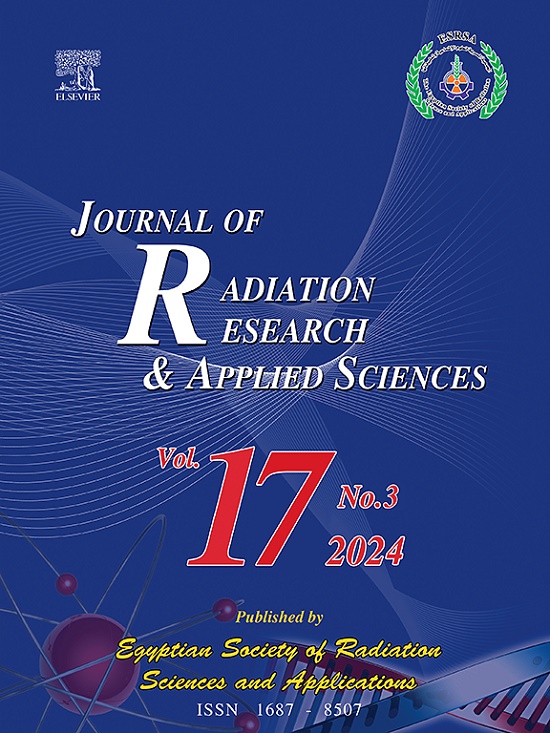滑移和热效应对MHD分数杰弗里纳米流体流动的影响
IF 2.5
4区 综合性期刊
Q2 MULTIDISCIPLINARY SCIENCES
Journal of Radiation Research and Applied Sciences
Pub Date : 2025-06-12
DOI:10.1016/j.jrras.2025.101688
引用次数: 0
摘要
纳米流体具有优异的热特性,在工业和生物医学领域的辐射影响环境中越来越重要。本研究建立了一个分数阶模型,描述了嵌入单壁碳纳米管(SWCNTs)和多壁碳纳米管(MWCNTs)的人体血液纳米流体沿无限垂直表面的混合对流流动。为了捕获记忆和遗传效应,使用恒定比例卡普托(CPC)算子,而拉普拉斯技术得到温度、速度和浓度曲线的半解析解,并使用Stehfest和Tzou算法获得其拉普拉斯逆变换。结果表明,热辐射显著增强了传热,由于优越的导热性,血液-纳米碳纳米管纳米流体的温度升高了12%,而血液-纳米碳纳米管纳米流体由于密度较低而具有更高的速度。这些发现有助于开发和优化用于工业工程应用的纳米流体系统,包括高性能热交换器、太阳能集热器、电子冷却系统和生物医学热疗法,其中精确的热扩散控制是必不可少的。本文章由计算机程序翻译,如有差异,请以英文原文为准。
Slip and thermal effects on MHD fractional Jeffrey nanofluid flow
Nanofluids with superior thermal characteristics are increasingly important in radiation-influenced environments across industrial and biomedical domains. This work develops a fractional-order model describing the mixed convection flow of human blood-based nanofluids embedded with single-wall carbon nanotubes (SWCNTs) and multi-wall carbon nanotubes (MWCNTs) along an infinite vertical surface. To capture memory and hereditary effects, the constant proportional Caputo (CPC) operator is utilized, while the Laplace technique yields semi-analytical solutions for temperature, velocity, and concentration profiles, and its inverse Laplace transform is obtained using the Stehfest and Tzou algorithm. The results show that thermal radiation significantly enhances heat transfer, with a 12 % increase in temperature for blood-SWCNT nanofluid due to superior thermal conductivity, while blood-MWCNT nanofluid exhibits higher velocity due to lower density. These findings contribute to the development and optimization of nanofluid systems for use in industrial engineering applications, including high-performance heat exchangers, solar collectors, electronic cooling systems, and biomedical thermal therapies where precise thermal diffusion control over is essential.
求助全文
通过发布文献求助,成功后即可免费获取论文全文。
去求助
来源期刊

Journal of Radiation Research and Applied Sciences
MULTIDISCIPLINARY SCIENCES-
自引率
5.90%
发文量
130
审稿时长
16 weeks
期刊介绍:
Journal of Radiation Research and Applied Sciences provides a high quality medium for the publication of substantial, original and scientific and technological papers on the development and applications of nuclear, radiation and isotopes in biology, medicine, drugs, biochemistry, microbiology, agriculture, entomology, food technology, chemistry, physics, solid states, engineering, environmental and applied sciences.
 求助内容:
求助内容: 应助结果提醒方式:
应助结果提醒方式:


